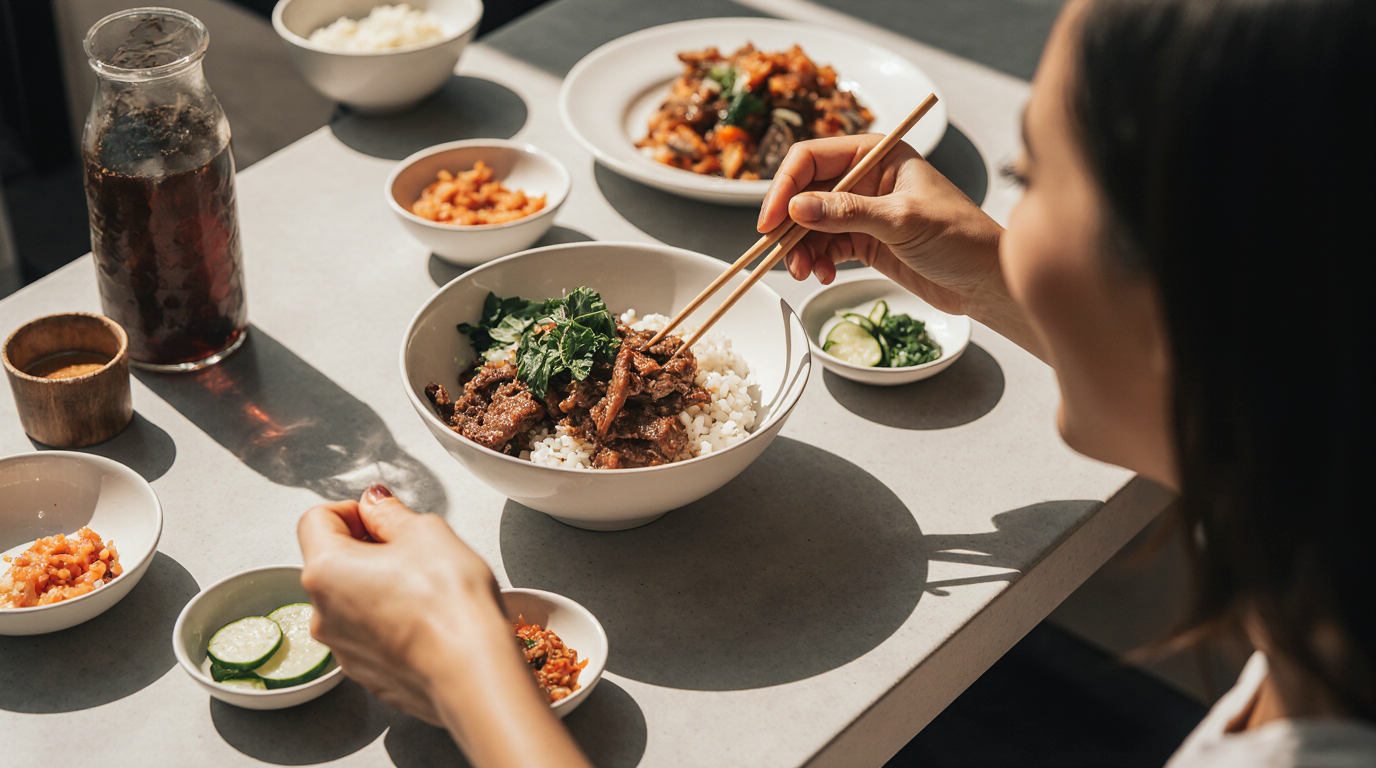Easy Korean Bulgogi Rice Bowl – Tender Beef with Savory Soy Garlic Sauce
Indulge in the flavors of tender beef and savory soy garlic sauce with the Korean Bulgogi Rice Bowl, a dish that embodies the essence of Korean food. This popular recipe is not only delicious but also easy to prepare, making it a perfect meal for any day of the week.
The Bulgogi recipe, known for its marinated beef, is a staple in Korean cuisine. When served over a bed of rice in a bowl, it creates a satisfying and filling meal. In this article, we will explore how to make this dish, highlighting the key ingredients and steps involved.
Key Takeaways
- Learn how to make a delicious Korean Bulgogi Rice Bowl at home.
- Understand the key ingredients and their roles in the dish.
- Discover tips for preparing the perfect savory soy garlic sauce.
- Explore variations of the Bulgogi recipe for different tastes.
- Get insights into the nutritional benefits of the meal.
The Rich History of Bulgogi in Korean Cuisine
Bulgogi, a staple of Korean cuisine, has a rich history that spans centuries. This beloved dish has evolved significantly over time, influenced by various cultural and culinary factors.
Origins of Bulgogi in Ancient Korea
Bulgogi originated in ancient Korea, where it was marinated in a mixture of soy sauce, garlic, and other ingredients before being grilled. The name ‘Bulgogi’ translates to ‘fire meat,’ indicating its traditional cooking method. Initially, it was a dish for the nobility, but its popularity soon spread to the general population.
- The original marinade included soy sauce, garlic, and sesame oil.
- Bulgogi was cooked over an open flame, giving it a distinctive flavor.
- The dish was often served at special occasions and gatherings.
Evolution into Modern Korean BBQ
Over time, Bulgogi has evolved into a central component of modern Korean BBQ. The introduction of new ingredients and cooking techniques has adapted the traditional recipe to contemporary tastes. Today, Bulgogi is enjoyed not only in Korea but worldwide, with various regional twists.
Key factors in its evolution include:
- The incorporation of sugar and other sweeteners into the marinade.
- The use of different types of meat, such as beef, pork, and chicken.
- Modern cooking methods, including grilling and stir-frying.
What Makes a Korean Bulgogi Rice Bowl Special
Korean cuisine has given the world many delightful dishes, but the Bulgogi Rice Bowl stands out for its rich flavors and cultural significance. This dish is a masterclass in balance and harmony, bringing together tender beef, savory soy garlic sauce, and perfectly cooked rice.
The Perfect Balance of Flavors
The Bulgogi Rice Bowl is renowned for its perfect balance of flavors. The sweetness of the caramelized beef, the savory umami of the soy sauce, and the spiciness of the garlic all come together to create a harmonious taste experience. This balance is achieved through a careful selection of ingredients and a precise cooking technique.
| Flavor Component | Ingredient | Contribution |
|---|---|---|
| Sweetness | Caramelized Beef | Depth of flavor |
| Savory Umami | Soy Sauce | Richness and depth |
| Spiciness | Garlic | Aromatic warmth |
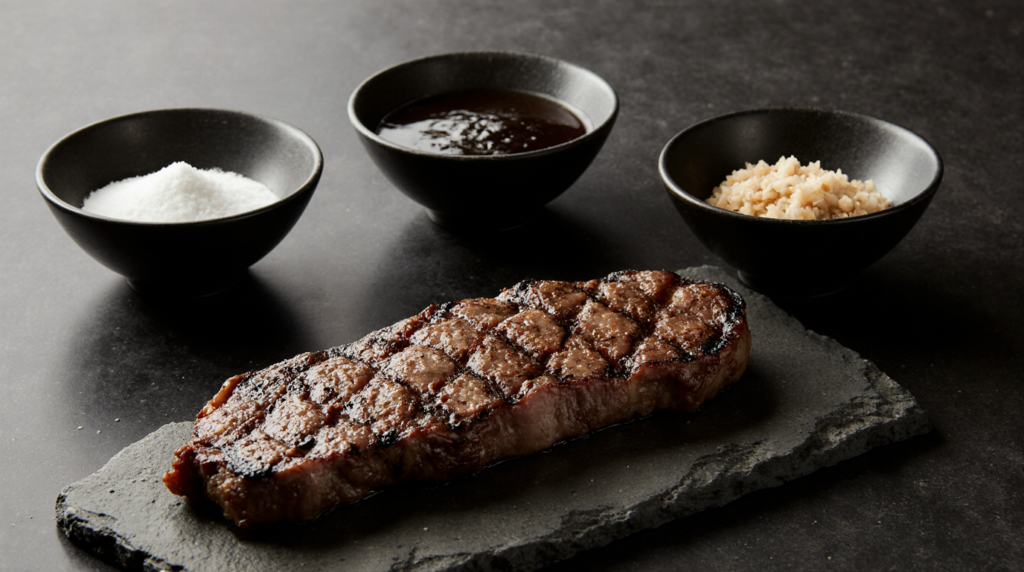
Cultural Significance in Korean Dining
The Bulgogi Rice Bowl holds a special place in Korean cuisine and culture. It’s not just a meal; it’s an experience that brings people together. In Korea, mealtimes are sacred, and dishes like Bulgogi Rice Bowl are at the heart of family gatherings and celebrations.
The cultural significance of this dish is also reflected in its versatility. Whether it’s a quick weekday lunch or a special occasion dinner, the Bulgogi Rice Bowl fits seamlessly into any setting, making it a beloved dish across different demographics.

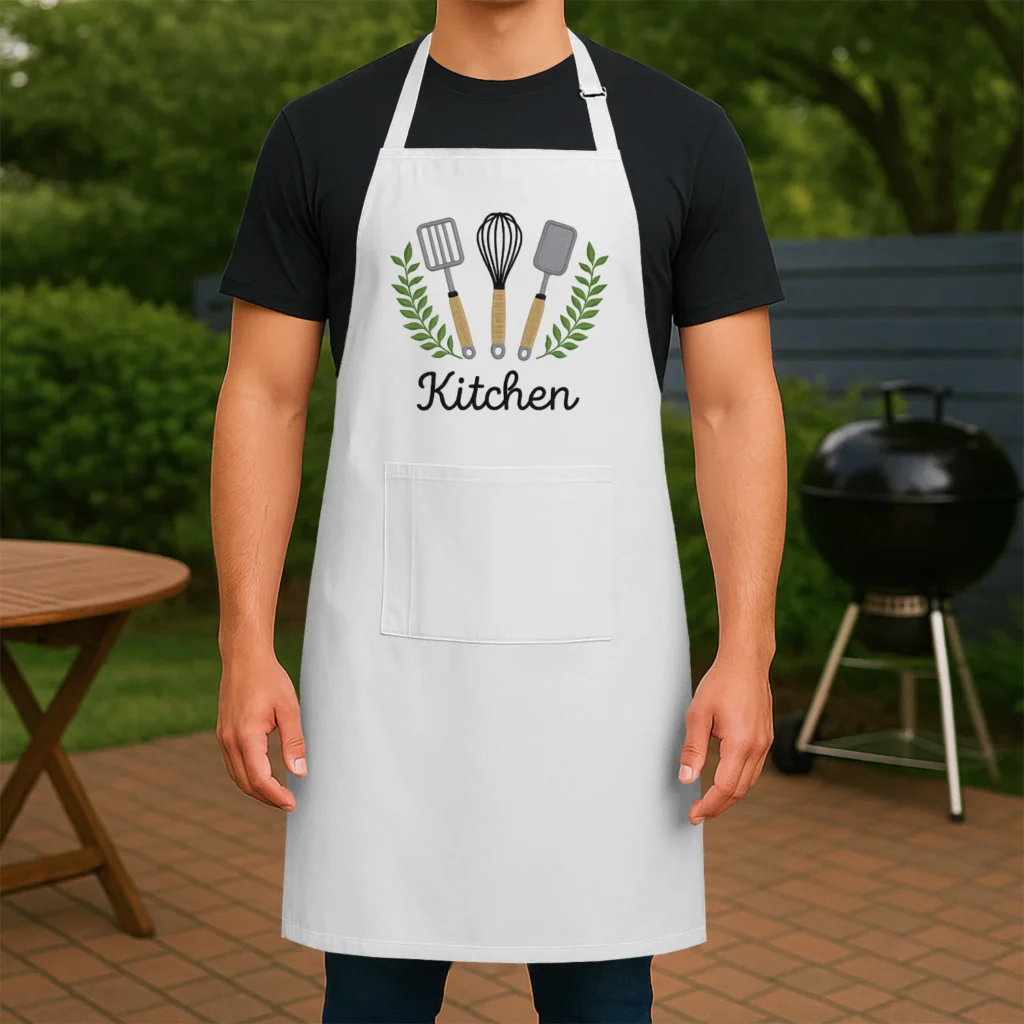
Essential Ingredients for Authentic Korean Bulgogi
Creating an authentic Korean Bulgogi rice bowl starts with understanding the essential ingredients that make this dish so flavorful. The quality and combination of these ingredients are what set a traditional Bulgogi apart from other beef dishes.
Selecting the Right Cut of Beef
For a classic Bulgogi recipe, thinly sliced beef is a must. The best cuts for Bulgogi are those that are tender and can be sliced into thin strips, such as ribeye or sirloin. The thin slices not only cook quickly but also absorb the marinade more effectively, ensuring that each bite is packed with flavor.
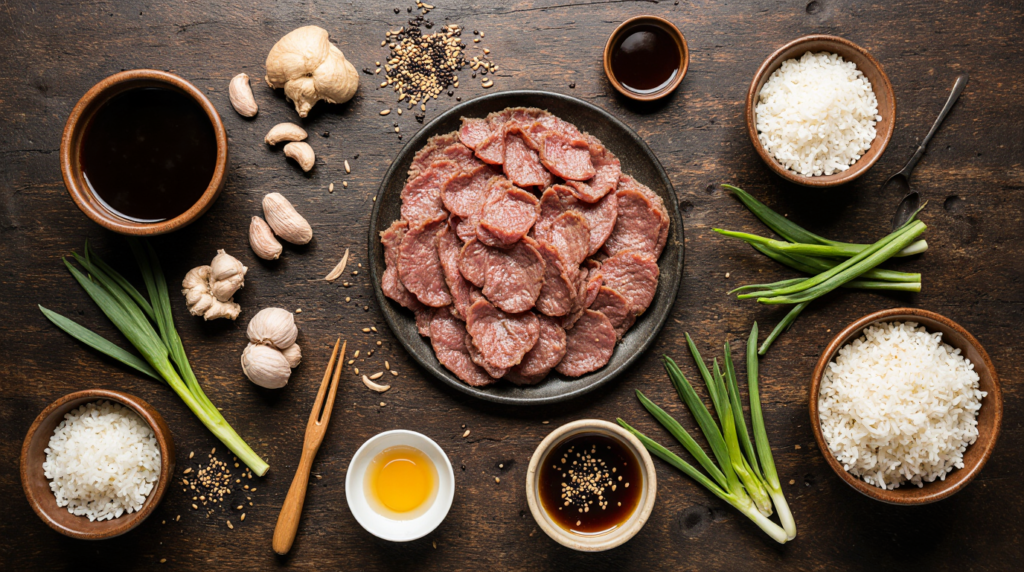
Key Marinade Components
The marinade is the heart of Bulgogi’s flavor profile. Key components typically include soy sauce, sugar, garlic, ginger, and sesame oil. These ingredients work together to create a sweet, savory, and slightly nutty flavor that is characteristic of Korean food. Adjusting the proportions of these ingredients allows for personalization of the dish.
Rice and Garnish Options
A Korean Bulgogi rice bowl is not complete without a bed of steaming hot rice and some garnishes. Short-grain white or brown rice is ideal as it clings together well. For garnishes, options like green onions, toasted sesame seeds, and a fried egg add texture and flavor. These elements come together to create a balanced and satisfying meal.
| Ingredient | Purpose | Common Options |
|---|---|---|
| Beef | Main protein | Ribeye, Sirloin |
| Marinade | Flavor enhancer | Soy sauce, Sugar, Garlic, Ginger, Sesame oil |
| Rice | Base of the dish | Short-grain white or brown rice |
| Garnishes | Add texture and flavor | Green onions, Sesame seeds, Fried egg |
The Perfect Bulgogi Marinade Recipe
The secret to a mouth-watering Korean Bulgogi lies in its marinade, a blend of savory, sweet, and spicy elements. A well-crafted marinade not only tenderizes the beef but also infuses it with the rich flavors characteristic of Korean BBQ.
Traditional vs. Modern Marinade Variations
Traditional Bulgogi marinades typically include a combination of soy sauce, garlic, ginger, sugar, and sesame oil. These ingredients provide a deep, savory flavor profile that is quintessentially Korean. Modern variations may incorporate additional elements such as gochujang (Korean chili paste) for a spicy kick or pear puree for enhanced sweetness.
| Ingredient | Traditional | Modern Variation |
|---|---|---|
| Soy Sauce | Essential | Essential |
| Garlic | Minced, used liberally | Minced, with added roasted garlic for depth |
| Ginger | Grate, used sparingly | Grate, with some candied ginger for sweetness |
| Sugar | Granulated sugar | Brown sugar or honey for a richer flavor |
Marinating Techniques for Maximum Flavor
To achieve maximum flavor, it’s crucial to marinate the beef for an adequate amount of time. Ideally, the beef should be marinated for at least 2 hours, though overnight marinating yields the best results. Ensure that the beef is coated evenly with the marinade, and consider massaging the meat gently to help the flavors penetrate deeper.
- Use a non-reactive container, such as glass or stainless steel, to prevent flavor alteration.
- Keep the marinating beef refrigerated to prevent bacterial growth.
- Turn the beef occasionally to ensure even marination.
Step-by-Step Korean Bulgogi Rice Bowl Preparation
Let’s dive into the step-by-step process of preparing a Korean Bulgogi Rice Bowl, a dish that combines tender beef with savory soy garlic sauce, all served over a bed of perfectly cooked rice. This delicious Korean meal is not only flavorful but also visually appealing.
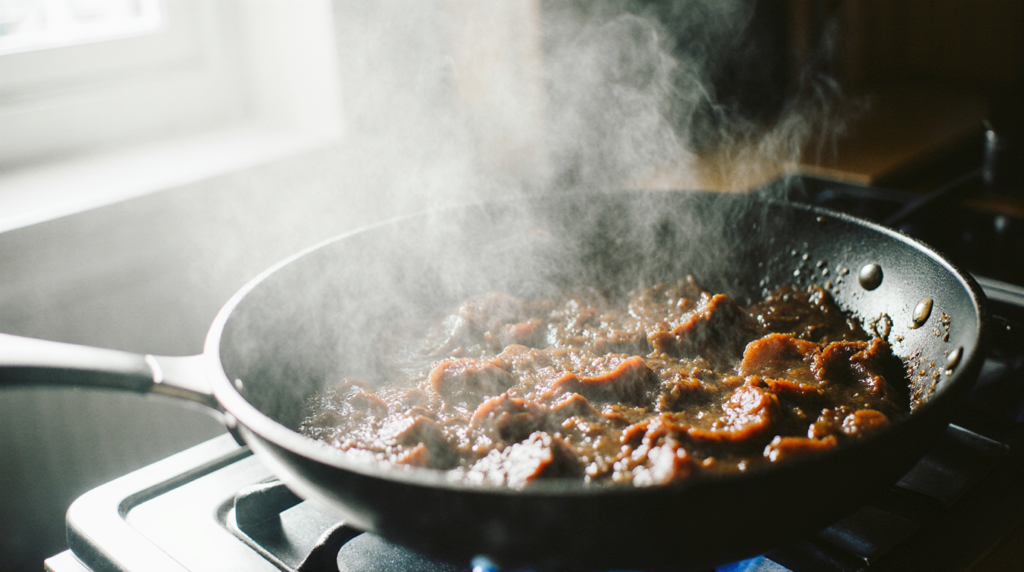
Preparing the Beef
To start, slice the beef into thin strips against the grain. This ensures tenderness and helps the meat cook evenly. For an authentic Korean Bulgogi Rice Bowl, use a cut like ribeye or sirloin. Marinate the beef in a mixture of soy sauce, garlic, ginger, sugar, and sesame oil for at least 30 minutes. The longer it marinates, the more flavorful the beef will be.
After marinating, cook the beef in a hot skillet or on a grill until it’s cooked to your desired level of doneness. For a traditional touch, grill the beef, but stovetop cooking works just as well for a quick meal.
Cooking Perfect Rice
Cooking the right rice is crucial for a rice bowl. Use short-grain rice, which is stickier and clings together better than long-grain rice. Rinse the rice thoroughly before cooking to remove excess starch, then cook it according to the package instructions or using a rice cooker. The goal is to achieve rice that is tender but still slightly firm in the center.
Assembling Your Rice Bowl
To assemble your Korean Bulgogi Rice Bowl, start with a generous serving of rice. Add slices of the cooked beef on top, arranging it in a visually appealing manner. Garnish with green onions, toasted sesame seeds, and a sprinkle of crispy garlic for added texture and flavor. You can also add a fried egg or kimchi on the side to make it a more filling meal.
Serving your delicious Korean meal in a bowl makes it not just a meal, but an experience. The combination of flavors, textures, and colors elevates the dining experience, making it a satisfying and enjoyable meal.
Cooking Techniques for Tender, Flavorful Bulgogi
Achieving tender and flavorful Bulgogi requires mastering various cooking techniques that bring out the best in this traditional Korean BBQ dish. The right method can make all the difference in the texture and taste of the beef.
Traditional Grilling Methods
Traditional grilling is a popular method for cooking Bulgogi, as it adds a smoky flavor to the dish. To grill Bulgogi, preheat your grill to medium-high heat and cook the marinated beef for 3-5 minutes per side, or until it reaches your desired level of doneness. This method is ideal for those who enjoy the authentic Korean BBQ experience.
Stovetop Alternatives for American Kitchens
For those without access to a grill or preferring an indoor cooking method, stovetop alternatives are available. Cooking Bulgogi on a stovetop involves heating a skillet or wok over medium-high heat and cooking the beef for 3-5 minutes, or until it’s cooked through. This method allows for quick cooking and easy cleanup.
Modern Cooking Appliance Options
Modern cooking appliances, such as instant pots or air fryers, can also be used to cook Bulgogi. These appliances offer a convenient and hands-off way to cook the dish. For example, an instant pot can cook Bulgogi in under 10 minutes, while an air fryer can produce crispy results with minimal oil.
| Cooking Method | Cooking Time | Flavor Profile |
|---|---|---|
| Grilling | 3-5 minutes per side | Smoky, charred |
| Stovetop | 3-5 minutes | Caramelized, savory |
| Instant Pot | Under 10 minutes | Tender, rich |
| Air Fryer | 5-7 minutes | Crispy, slightly sweet |
Delicious Variations of Korean Bulgogi Rice Bowl
Korean Bulgogi Rice Bowl offers a canvas for creativity with its diverse variations. This popular Korean dish can be modified and reinvented to cater to different tastes and dietary preferences. From spicy versions to vegetarian alternatives, the possibilities are endless.
Spicy Gochujang Bulgogi
For those who enjoy a bit of heat, Spicy Gochujang Bulgogi is an exciting variation. It incorporates gochujang, a Korean chili paste, into the marinade, giving the beef a spicy kick. This version is perfect for those who like bold flavors.
Vegetarian and Protein Alternative Options
Not everyone consumes beef, so vegetarian and alternative protein options are essential. Tofu or tempeh can be marinated in a similar bulgogi sauce for a vegetarian version. For those looking for other protein sources, chicken or pork can be used as alternatives to beef.
Regional Korean Variations
Korea is a country with a rich culinary history, and different regions have their own twists on bulgogi. For example, some regions might use different ingredients in the marinade or vary the cooking method. Exploring these regional variations can add depth to your understanding and appreciation of bulgogi.
| Variation | Main Ingredient | Flavor Profile |
|---|---|---|
| Spicy Gochujang Bulgogi | Beef | Spicy, Savory |
| Vegetarian Bulgogi | Tofu/Tempeh | Savory, Slightly Sweet |
| Regional Jeolla Bulgogi | Beef | Sweet, Garlicky |
These variations showcase the versatility of the Korean Bulgogi Rice Bowl, making it a dish that can be enjoyed in many different ways, from spicy Asian food recipes to vegetarian rice bowl options.
Perfect Side Dishes to Complement Your Bulgogi Bowl
A well-rounded Korean meal includes not just the main dish, but also a variety of side dishes that complement the flavors of your Bulgogi Bowl. Traditional Korean cuisine is known for its numerous accompaniments, called “banchan,” which add depth and variety to the meal.
Traditional Korean Banchan
Traditional Korean banchan offers a range of flavors and textures that can enhance your Bulgogi experience. Some popular options include:
- Kimchi: Spicy fermented Korean cabbage that adds a bold kick.
- Miyeok Muchim: A seaweed salad dressed with sesame oil and vinegar.
- Kongnamul Muchim: A seasoned soybean sprout dish.
These banchan are not only delicious but also provide a nutritious complement to your meal.
Quick and Easy Side Options for American Cooks
For those looking for simpler alternatives, here are some quick and easy side dishes that pair well with Bulgogi:
- Steamed Edamame: A simple, protein-rich option.
- Cucumber Salad: Thinly sliced cucumbers with a light vinaigrette.
- Pickled Carrots: Quick-pickled carrots add a nice crunch and acidity.
These options are easy to prepare and can be made with ingredients commonly found in American supermarkets, making them perfect for a quick and delicious Korean meal.
Meal Prep and Storage Tips for Korean Bulgogi Rice Bowl
To enjoy your Korean Bulgogi Rice Bowl at its best, even on busy days, consider these meal prep and storage tips. Effective meal preparation can save time and ensure that your meal remains flavorful and nutritious.
Make-Ahead Strategies
Preparing components of your Korean Bulgogi Rice Bowl ahead of time can streamline your cooking process. The bulgogi beef can be marinated and stored in the refrigerator for up to 24 hours before cooking. Additionally, rice can be cooked in advance and refrigerated or frozen for later use. Consider cooking a large batch of rice and using it throughout the week in different meals.
Proper Storage and Reheating Methods
Proper storage is crucial to maintaining the quality of your Korean Bulgogi Rice Bowl. Store cooked beef and rice in separate airtight containers in the refrigerator to keep them fresh for up to 3 days. When reheating, use a microwave-safe container and cover the dish to retain moisture. For best results, reheat the beef in a pan with a small amount of oil to preserve its texture and flavor.
| Component | Storage Method | Reheating Tip |
|---|---|---|
| Bulgogi Beef | Airtight container, refrigerate | Pan-fry with a bit of oil |
| Cooked Rice | Airtight container, refrigerate or freeze | Microwave with a damp paper towel |
Health Benefits and Nutritional Profile of Bulgogi Bowls
Enjoying a Korean Bulgogi rice bowl means you’re getting a good dose of protein and essential nutrients. The dish combines tender beef, savory soy garlic sauce, and steamed rice, providing a balanced mix of carbohydrates, proteins, and fats, making it a healthy meal option.
The Asian food recipe is not only delicious but also nutrient-rich, with the beef being a significant source of protein. The marinade, which includes soy sauce, garlic, and sugar, enhances the flavor and adds to the nutritional value.
Protein and Nutrient Breakdown
A typical Korean Bulgogi rice bowl is rich in protein due to the generous portion of beef. The marinade and the vegetables used as garnishes add vitamins and minerals, making it a nutrient-dense meal.
- High protein content from beef
- Vitamins and minerals from vegetables
- Complex carbohydrates from rice
Adapting for Dietary Restrictions
For those with dietary restrictions, Bulgogi can be adapted. Vegetarians can substitute beef with tofu or portobello mushrooms. Using gluten-free soy sauce can accommodate those with gluten intolerance, making it a versatile healthy meal option.
Where to Find Authentic Korean Ingredients in the US
Recreating the flavors of Korea in your own kitchen starts with sourcing the right ingredients. While it may seem daunting, there are several ways to find authentic Korean ingredients in the US.
Online Resources and Specialty Asian Markets
One of the easiest ways to obtain Korean ingredients is through online retailers and specialty Asian markets. Stores like Mitsuwa Marketplace and H Mart offer a wide range of products, from Gochujang to Korean chili flakes.
Suitable American Substitutions
When authentic ingredients are not available, suitable American substitutions can be used. For example, if you can’t find Korean chili flakes (gochugaru), you can substitute with a mix of cayenne pepper and paprika.
| Korean Ingredient | American Substitution |
|---|---|
| Gochujang | Miso paste with chili flakes |
| Gochugaru | Cayenne pepper + paprika |
| Soy sauce | Tamari or nama shoyu |
Conclusion: Enjoying Your Homemade Korean Bulgogi Rice Bowl
Now that you’ve mastered the art of creating a delicious Korean Bulgogi Rice Bowl, it’s time to savor the fruits of your labor. This dish is more than just a meal; it’s an experience that brings the flavors and culture of Korea to your table. With tender beef marinated in a savory soy garlic sauce, served atop a bed of perfectly cooked rice, you’ve created a truly authentic Korean food experience.
The Korean Bulgogi Rice Bowl is a versatile dish that can be adapted to suit various tastes and dietary preferences. Feel free to experiment with different variations, such as adding spicy gochujang sauce or substituting the beef with vegetarian alternatives. The possibilities are endless, and the result is always a delicious Korean meal that’s sure to impress.
As you continue to explore the world of Korean cuisine, remember that the key to a great Korean Bulgogi Rice Bowl lies in the balance of flavors and the quality of the ingredients. With practice and patience, you’ll become a master of this beloved Korean dish, and your homemade creations will be a testament to the rich culinary heritage of Korea.
FAQ
What is Korean Bulgogi?
Korean Bulgogi is a popular Korean dish made with thinly sliced beef, typically marinated in a mixture of soy sauce, sugar, garlic, and sesame oil, then grilled or stir-fried. It’s often served with a bowl of rice.
What cut of beef is best for Bulgogi?
For authentic Korean Bulgogi, it’s recommended to use tender cuts such as ribeye or sirloin. These cuts are not only flavorful but also become tender after marinating.
Can I make Bulgogi without a grill?
Yes, you can make Bulgogi without a grill. While traditional grilling is a common method, you can achieve similar results using a stovetop or modern cooking appliances like an air fryer or Instant Pot.
What are some common variations of Bulgogi?
Variations include Spicy Gochujang Bulgogi, which adds a spicy kick, and vegetarian or vegan versions that substitute beef with tofu or other plant-based proteins. Regional variations also exist, incorporating local flavors and ingredients.
How do I store and reheat leftover Bulgogi?
Leftover Bulgogi can be stored in an airtight container in the refrigerator for up to 3 days. To reheat, simply stir-fry the beef in a pan with a bit of oil until heated through, or use a microwave-safe container and heat in short intervals until warm.
Is Bulgogi healthy?
Bulgogi can be a healthy option, as it’s high in protein and can be made with a variety of nutrient-rich ingredients. However, the nutritional profile can vary based on the cut of beef used and the marinade ingredients. Opting for leaner cuts and balancing the dish with vegetables can enhance its health benefits.
Where can I find Korean ingredients in the US?
You can find Korean ingredients in specialty Asian markets, online retailers, or some well-stocked supermarkets. If you’re unable to find specific Korean ingredients, you can often substitute with similar items found in American grocery stores.
Can I meal prep Bulgogi?
Yes, Bulgogi is a great candidate for meal prep. You can marinate the beef ahead of time and store it in the refrigerator for up to a day. Cooked Bulgogi can also be refrigerated or frozen for later use, making it convenient for meal planning.
Leave a Review & Rate This Recipe!
There are no reviews yet. Be the first one to write one.

